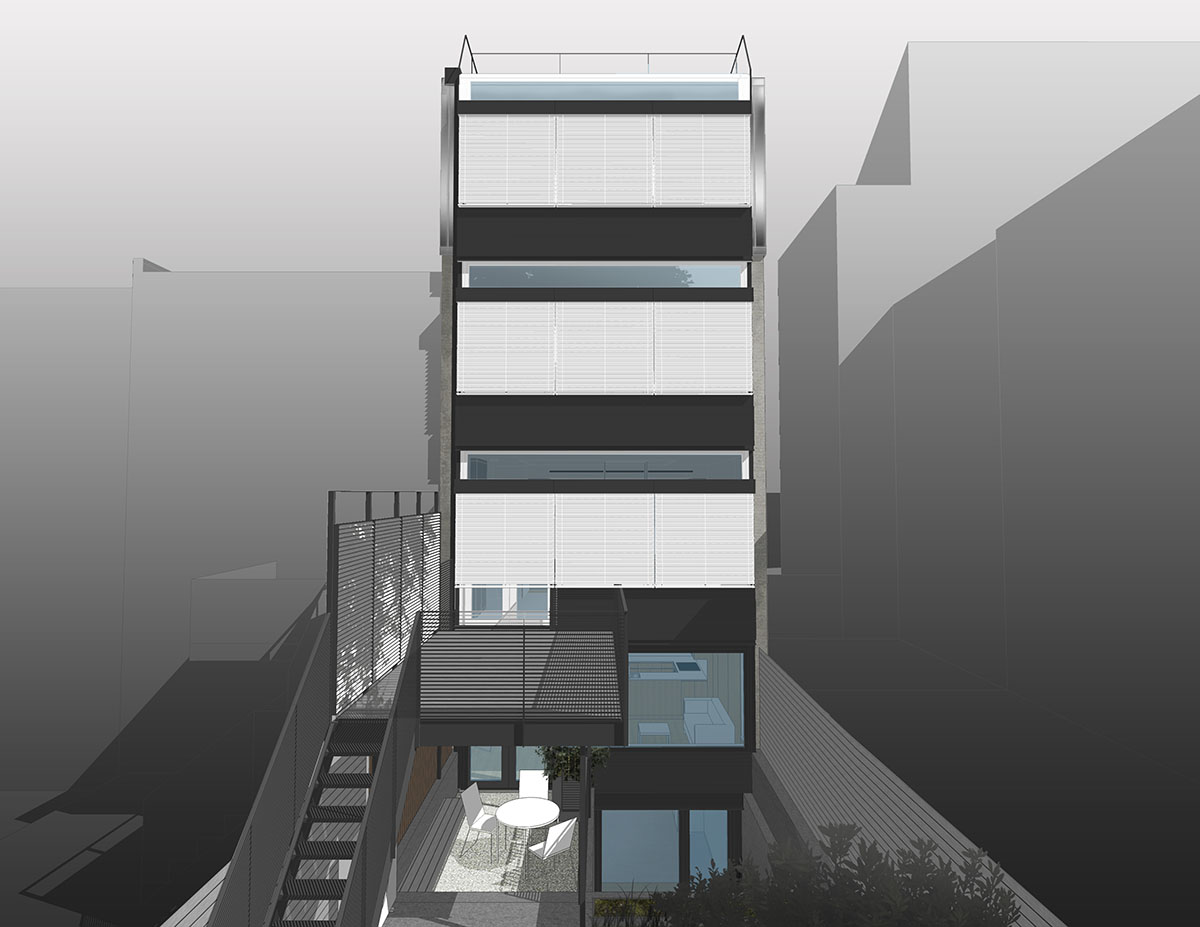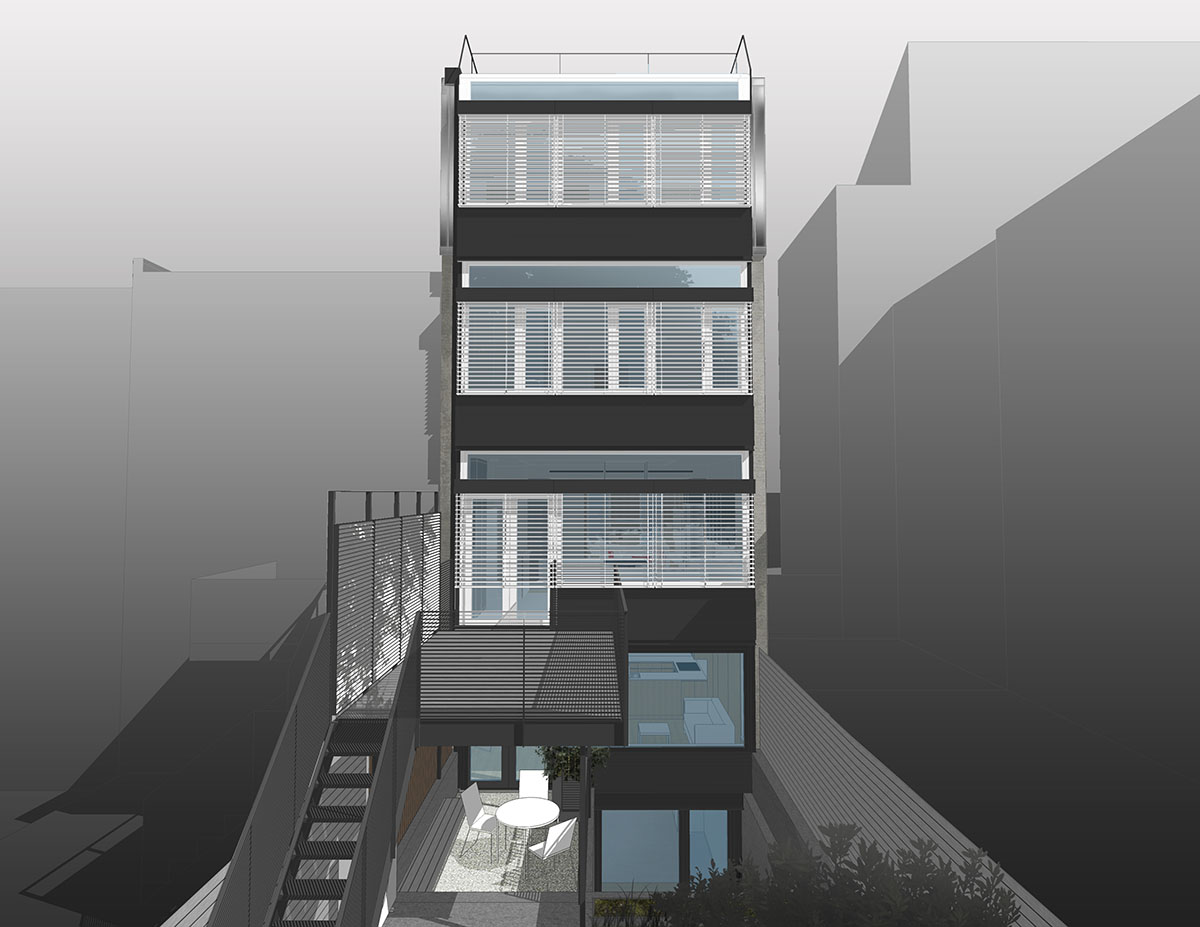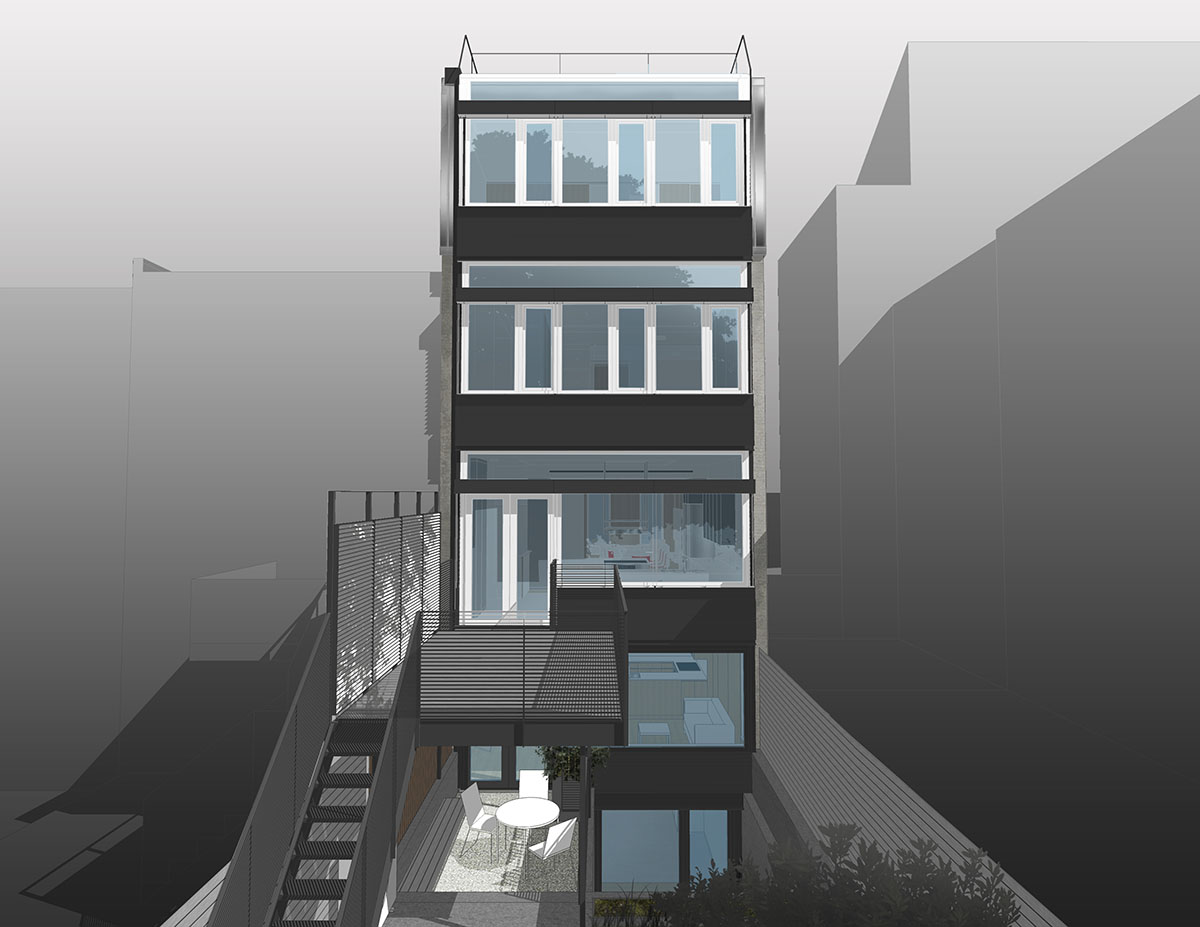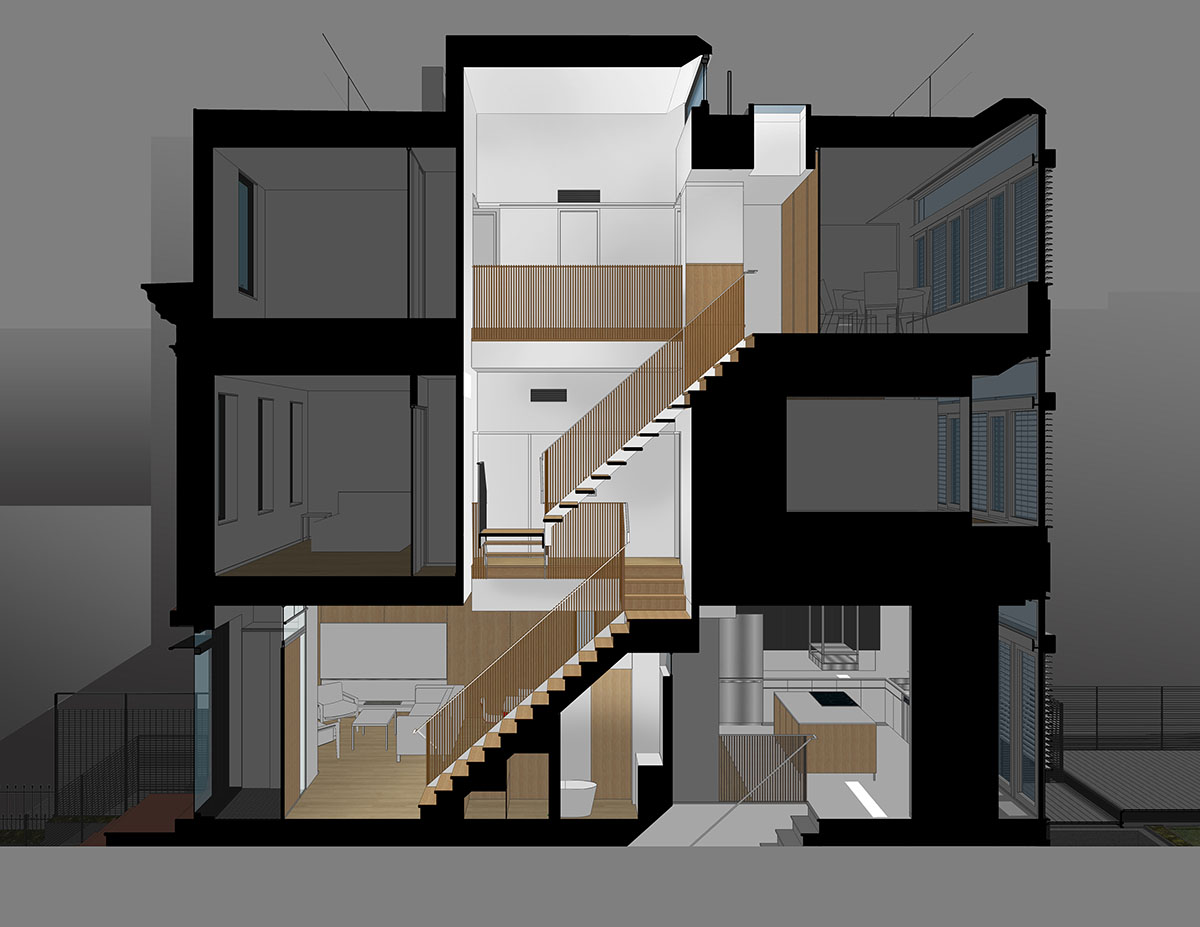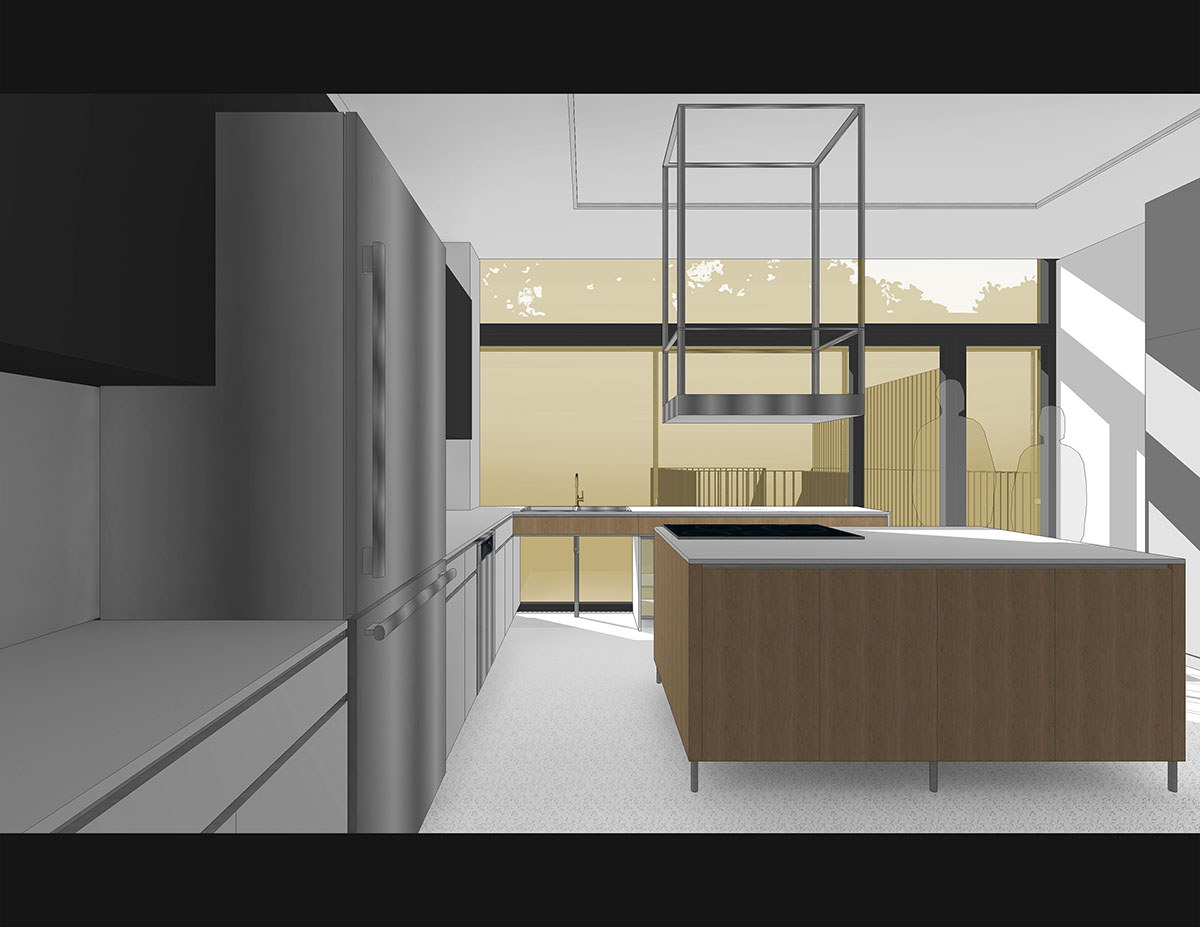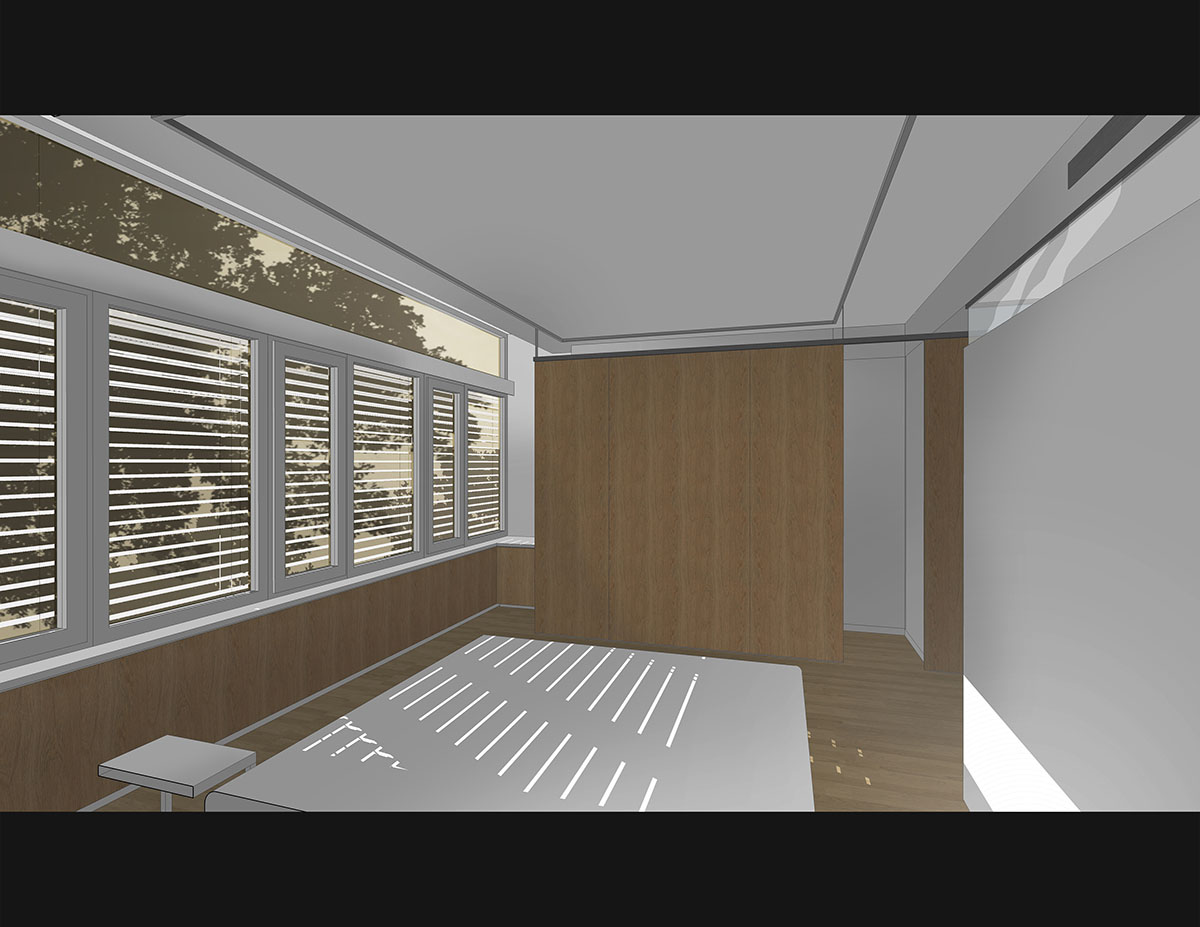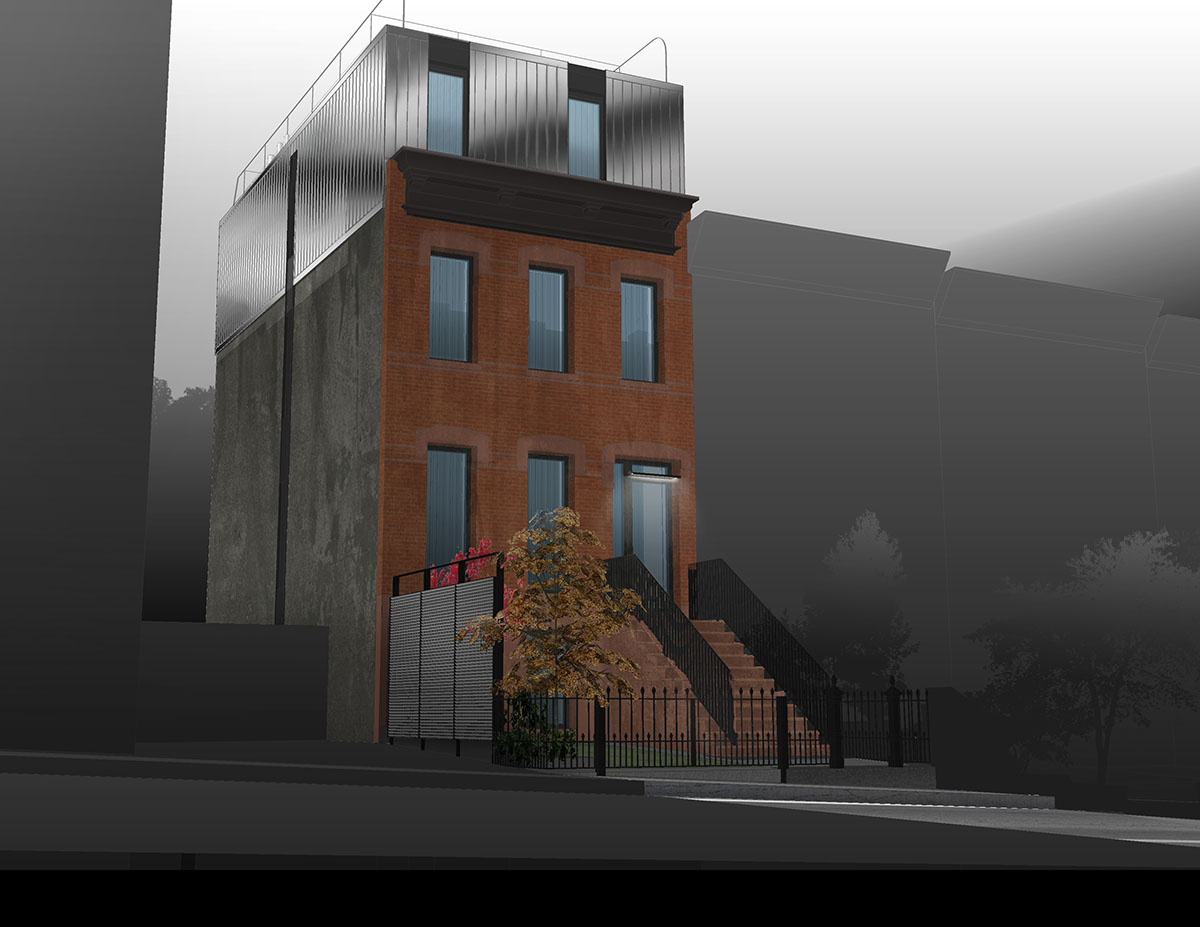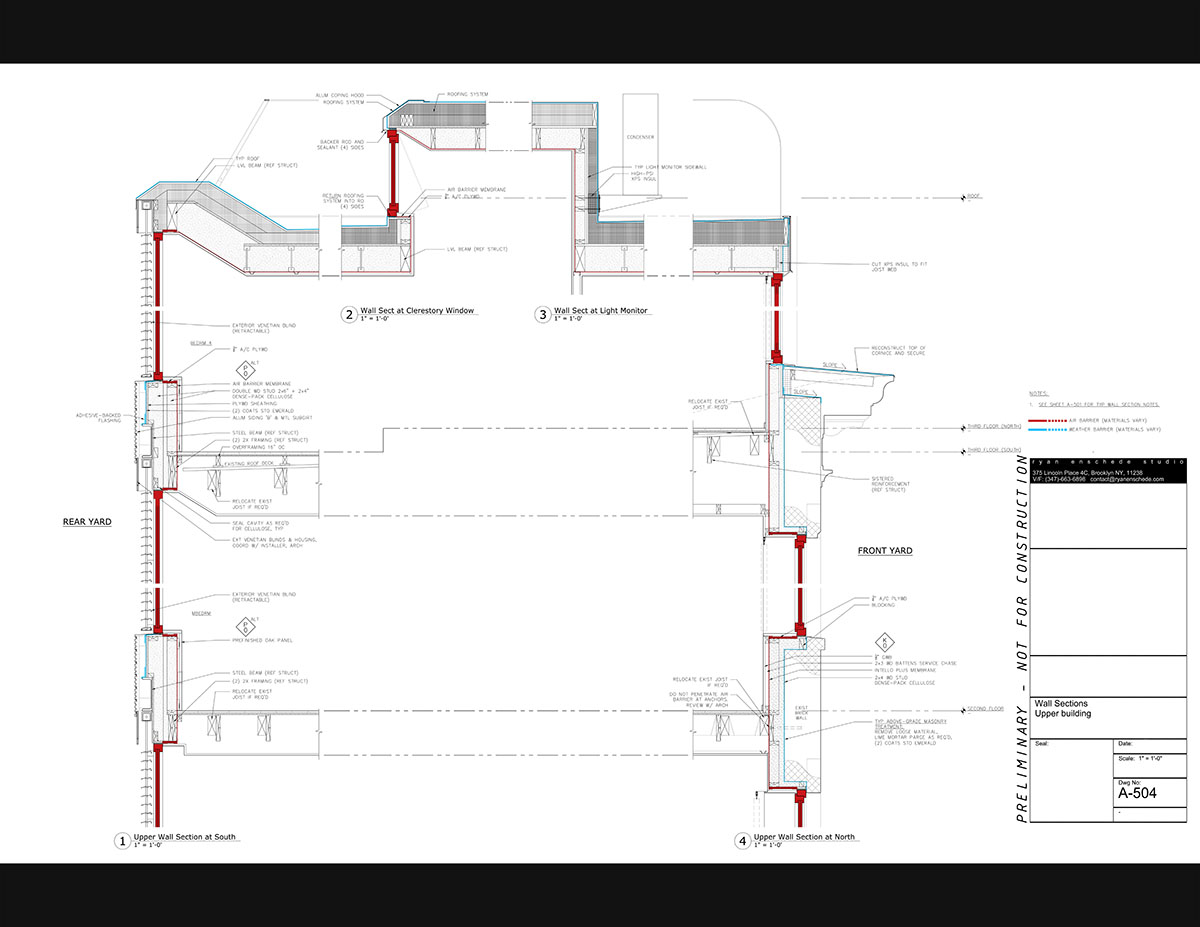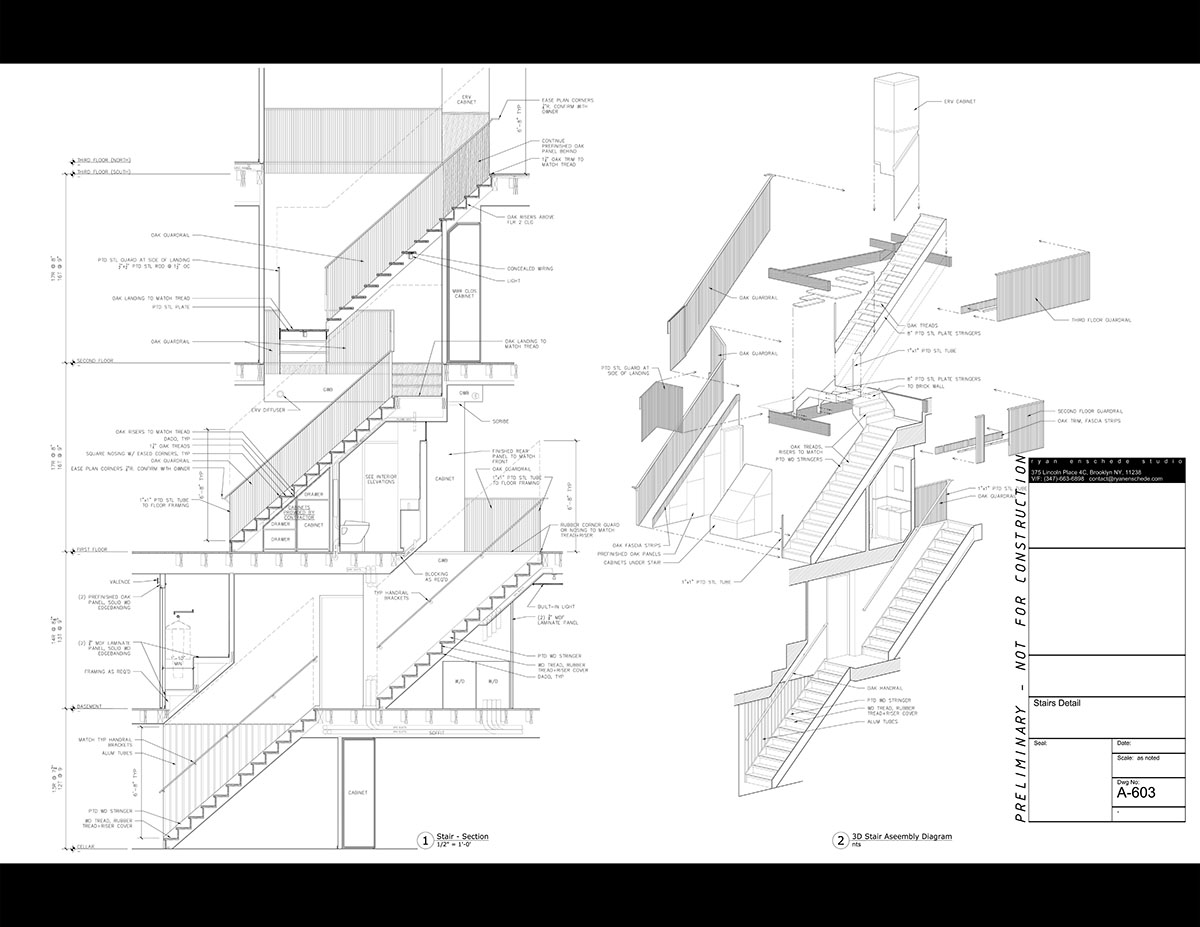Passive House Townhouse
The new design of this historic townhouse began with the old: an 1890’s two-story red-brick townhouse, with simple stone trims and fine narrow mortar joints, a south-facing rear facade and unused Zoning Floor Area. The existing house has an exceptionally straight and sound exterior shell, but its mistreated interior is past repair. And like much of NYC, its historic construction remains the technological peer of horse-drawn carriages and the telegraph.
The project goal is to revitalize the building, put its assets to use, dramatically elevate its performance, and create new value. A full new interior is obliged. The rear facade will be opened wide to winter sun and summer greenery. Exterior shades block summer heat gain but allow light in and view out, even when “down”. A new third floor and deeper cellar make a modest-sized house significantly larger. A rooftop clerestory window will bring sunlight from the roof to the front door. The owners recognize that an investment of this magnitude is a one-time opportunity to change the energy footprint of the building. Compelled by the economics and performance of Passive House they purchased the property with this construction methodology specifically in mind. Passive House certification under the EnerPHit standard is expected as the project goal.
As a Passive House renovation of a historic Brooklyn townhouse, the project faces typical challenges at which the local community has become expert in solving. New work can’t be added over the outside of exterior load-bearing structural walls because they are party walls or were built with zero clearance to lot lines. This necessitates work be applied from the interior: a condition familiar to New Yorkers but contrary to ideal for Passive Houses. The emblematic problem is that every single joist in the house penetrates the air barrier at each end. The contractor must know or learn how to make good seals at this spot. But a number of other conditions also arise: water vapor drive in potentially permeable exterior load-bearing masonry walls is managed carefully with redundant system design, rigorous detailing of assemblies, and through specification of materials. Steps in thickness of exterior walls and the mating of new structure to existing demand unusual consideration for thermal bridging and adjustment of convention.
More to come.
